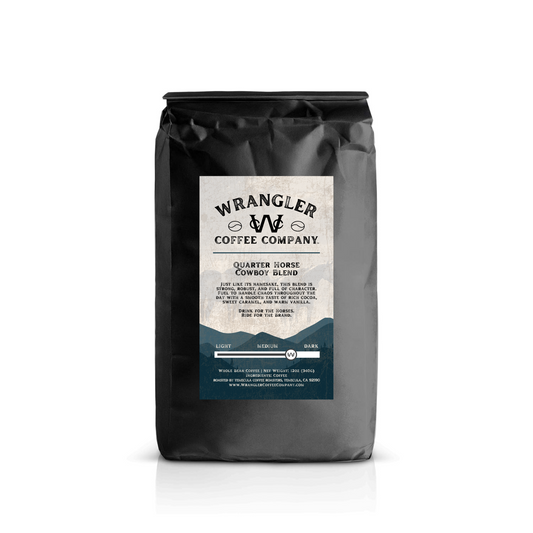
What Hollywood Often Gets Right and Wrong About Ranching
Share
From sweeping mountain landscapes to the slow creak of a saddle, Hollywood has long been fascinated with the imagery and grit of the American West. Whether it's a modern cowboy drama or a classic Western, shows and movies love to portray ranch life as a rugged, romantic, and often lawless existence. Please note, this isn't to say any specific cinematic neo-Westerns or old spaghetti Westerns are good or bad (or ugly) - it's just to say that they're entertainment, so enjoy them as such without confusing them for reality.
For those who’ve lived or worked on a ranch - or just have a deep respect for the lifestyle - it’s easy to spot where Hollywood gets it right and where the myths take over. Let’s break it down.
What It Often Gets Right:
1. Ranching is a 24/7 Lifestyle: Film/TV often shows cowboys up at dawn, working into the evening, and being on call at all hours - and that’s true. Animals don’t take weekends off, tend to be too creative for their own good, and emergencies don’t wait for convenient timing. Whether it’s calving season or a busted water line, ranchers and cowboys are always on. Granted, the ranch work is usually the focus for about 10% of a film/show while the rest is drama.
2. The Connection to Land and Heritage is Deep: Many shows capture the emotional and generational ties ranchers have to their land. Ranches are often family-run operations passed down for decades. Protecting that land isn’t just about business—it’s about preserving legacy and tradition.
3. Cowboying Requires Grit and Adaptability: Hollywood often highlights the toughness of cowboys, and there’s a reason for that. Ranch work demands mental resilience and physical endurance. You’ve got to be a little mechanic, a little vet, and a whole lot of problem-solver - especially when you’re miles from the nearest help.
4. Horses Are Still a Central Part of the Job: Despite the rise of four-wheelers, dirt bikes, and drones, horses remain essential in many ranch operations, especially in rough terrain - plus it's usually less stressful on the cattle to use horses. Some shows get this right, taking time to show good-ish horsemanship and the bond between rider and horse, although we all have our own preferred ways and techniques. If not going by horseback, you're probably in a side-by-side to carry more gear or feed.
5. The Cowboy Code is Real: There’s often an unspoken code among working cowboys: help your neighbors, don’t quit/complain when it’s tough, and do your job right. While dramatized for the screen, this sense of honor and work ethic is very real in ranch communities. The work humbles you, teaches you a lot about life, and puts a lot into perspective.
What It Often Gets Wrong:
1. Everyone’s Itching for a Fight: In cowboy fiction, it seems everyone on the ranch is some shoot-from-the-hip gunslinger or barroom brawl'n boxer. In reality, most do own firearms—but they’re respected tools, not props for shootouts. Most aren't looking for a fight—the work is exhausting enough and no one wants to make it harder. Day-to-day ranching is more about livestock and maintenance than fistfights and firefights.
2. Over-the-Top Drama: Feuds, backstabbing, hidden family secrets, dramatic betrayals—these might make for good TV, but ranching is more likely to involve debates over hay prices, when to rotate pastures, and misplacing tools. The real drama? Weather forecasts and market swings - those are usually your biggest enemies. That said, there are always crooked people out there that want what you have and will try to cheat, lie, and steal their way to get it.
3. Ranches Run with Surprisingly Few Employees: Film/TV often show massive ranches operated by just a handful of people who somehow do everything from herding cattle to managing finances. In real life, large ranching operations take teams and often outsource some of the work (like fixing fences) to other local specialists that have the equipment to do it fast. Even with multiple crews of people, there's always too much to do and not enough time.
4. Unrealistic Depictions of Cattle Work: While roping, branding, and herding cattle make for cinematic scenes, the reality is often less glamorous and far more routine. Cattle work is a skilled, methodical process—less dramatic chaos, more logistics and timing. If it was always as dangerously chaotic as it appears in movies/shows, then those people would probably be rethinking how they're managing they're crew and animals if they want to stay alive let alone in business.
5. Too Clean and Precise: Let’s be honest—most on-screen cowboys look like they just stepped out of wardrobe and hair well rested, not out of the arena . In the real world, ranching is dusty, muddy, bloody, and full of sweat. If your jeans are clean, you probably didn’t do much that day. Also, it's always comical how often the hero/heroine of a particular situation catches a calf or lands a precise shot in the heat of the moment on the first try while everyone's watching. That's magic of Hollywood editing and the level of skill we aspire to be. Life's a bit messier.
Overall Takeaways:
The Western mythos holds a powerful place in our collective imagination, and it’s no surprise that film and TV return to it time and again. While these portrayals often romanticize and/or exaggerate the reality of ranch life, they occasionally manage to capture the spirit and soul of the cowboy way. At the very least, it's reignited interest in this way of life and giving us a new chance to learn from one another and our history.
Real ranching is hard work, built on tradition, grit, and connection to the land. It’s not always dramatic, but it is deeply meaningful and will teach you a thing or two. The next time you're watching a cowboy flick or modern Western, enjoy the drama—but tip your hat to the folks living the real deal every day, far from the spotlight and much closer to the dirt.




